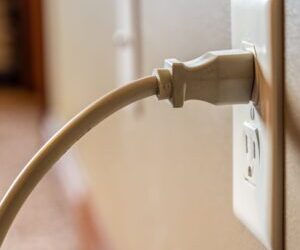Your home is one of your biggest investments, so it only makes sense that you should protect its value. Homes will deteriorate with age if not properly cared for. Good home maintenance can prevent expensive repairs. Regular inspections could also give you inspiration for improvements and remodeling.
If you want your home to last a lifetime and beyond, this is the maintenance checklist for you.
10-Point Fall Home Maintenance Checklist
Fall is the perfect time for some late outdoor projects. It’s also the season when you need to winterize your home. The following steps could prevent damage to your home throughout the colder months.
- Prune your trees, bushes, and shrubs. Tree limbs be pruned so that they’re at least 8ft away from your home. This will reduce debris in gutters and prevent damage from falling limbs.
- Inspect your fireplace and perform a full cleaning. This includes sweeping out the firebox and checking that the damper is working properly. You’ll also need to sweep your chimney. You can perform a DIY sweep with a round wire chimney brush.
If you find heavy creosote in your chimney (a flaky or tar-like substance), then it’s best to call in the professionals. Chimney cleaning increases the efficiency of your fire. It also prevents uncontrolled burning in the chimney lining.
- Check around windows and doors for cracks and gaps. Weather strip is useful for sealing small gaps around windows and doors. You can use caulk to fill larger gaps and damage or use an expanding spray foam for extensive damage. Rely on a professional handyman team if you need help with this step.
- Turn off your outdoor water supply and clear out your irrigation system. Some systems feature an automatic draining function which will prevent pipes from freezing. If you want to be confident that your irrigation is fully clear of water, call in professionals to perform a blow-out flush.
- The weather in fall is usually clear and perfect for outdoor work. Take the opportunity to inspect your driveway, steps, and pathways. Look for cracks and extensive damage that needs filling. Gel crack sealer (sometimes marketed as Asphalt Repair) can be used for touch ups. This will bond cracks and help prevent further damage.
- Winterize your pipes. If you have exposed pipes without insulation, you could be at risk next winter. Foam pipe insulation is affordable and simple to install. Check around pipe entry points and seal gaps (both interior and exterior). A caulking gun or spray foam will work well here.
- Insulate your water meter with a meter jacket. Alternatively, simply cut a sheet of insulation lining to wrap around the meter. Use durable cord to secure the lining.
- If your windows have suffered damage in previous winters, consider installing storm windows this year. These will give you peace of mind during the worst weather.
- Inspect your siding and home exterior for any damage. Fill cracks and gaps with foam or caulk filler. Major damage requires the attention of home repair professionals. Don’t ignore damaged siding, as the problem could worsen in the winter and cause extensive moisture damage.
- Clear out your gutters and check for debris or blockages. Consider installing a gutter guard (a quick and easy DIY project) to make future maintenance easier.
5-Point Winter Home Maintenance Checklist
If you work through your checklist in the fall, you’ll have less to worry about over the winter. With exterior inspection and maintenance taken care of, you’ll only need to watch for new problems that could develop.
- Clean and cover your air conditioner condenser unit. Your outdoor air conditioner unit is designed to stand up to all kinds of weather. An additional top cover can help keep it extra safe from heavy snow.
Despite some of the advice out there, it’s not a good idea to cover your condenser with a plastic or fabric cover. This can allow more moisture to accumulate inside. A full cover could also make the condenser an inviting home for insects and rodents.
Instead of fully wrapping your condenser, simply cover the top with a cutout of plywood. The plywood sheet should extend at least three inches over every side of the unit. You can secure the plywood with bricks or a heavy paving stone.
Clear snow from around your air conditioner after heavy snow fall. These steps should protect your unit and ensure its longevity for many seasons.
- Check your basement at least every two weeks or following any heavy rain or thaw. Look for signs of moisture or water entry. Ensure that no significant cracks are forming around walls or the foundation floor. If you spot damage that is progressing, contact a foundation specialist in the first instance.
- Inspect your roof, gutters, and exteriors for damage after any storms. Sometimes gutters could need clearing mid-winter. Extensive damage to your exterior can be fixed by home repair and renovation experts. If it’s not yet safe to make repairs due to weather, a contractor will be able to install a temporary fix to keep your home safe.
- Clean your vents and filters regularly. With the home being mostly closed up during the winter, your central air and filtration will be working overtime. Dust could accumulate in filters and vents. Regularly clean your central air outlets, as well as the filter on your main unit. If you are using a dryer often during the winter, make sure the lint filter is checked and cleared at least once per week.
- Drains in your home may not clear as easily during the winter. Regularly inspect your drains in the kitchen, bathrooms, and laundry. Remove debris from drains and run fresh warm water to clear any grime buildup.
6-Point Spring Home Maintenance Checklist
With the worst of the weather gone, spring is often used as a time to reopen the home, get fresh air flowing, and begin with annual cleaning. While a full household clean is very much recommended in spring, it’s also the right time for catch up maintenance.
You’ll be able to address any issues that developed in the winter.
- It’s time to inspect the roof again! Even if you checked your home following storms and heavy snow in the winter, spring is a good time to give it another look. Clearer weather will make it easier to identify damaged roofing tiles, shingles, and leaks. Also look out for missing tiles or any area that is sagging or lifting.
On the inside, check your attic for any discoloration on your rafters. Damp and wet spots will indicate that a leak occurred during the winter.
If you spot even minor damage, don’t ignore the problem. Your roof could be fine all summer long, with the problem coming back even worse next winter. Rather than take the risk, call in a specialist. A professional roofing service will be able to repair the leak while taking appropriate steps to prevent a future one.
- Change replaceable air filters or clean lifetime filters. This includes all filters on vents, air conditioners, and clothes dryers. If you’ve kept up your maintenance during the winter, then this should be a quick and easy task.
- Clean your windows and doors, including screens. Grime can buildup on windows and doors from all the rain, snow, and air that gets moved around in winter. Incorporate exterior windows and doors into your spring cleaning routine. If you have a pressure washer, then this will make the job much easier, and you could fit it in with the next point on the checklist.
- Power wash your whole home exterior. Siding and other exterior materials will accumulate grime and may even develop mold. A pressure washer will make light work of exterior cleaning. You could invest in one for the long term or hire one for a day of spring cleaning. Mix in an exterior-safe detergent for efficient cleaning without the need for wiping or scrubbing. Include your driveway, pavers, and other outdoor surfaces when you power wash your exterior.
- Spring is the perfect time to check your deck for damage. Whether your deck is painted or stained; the rain, wind, and snow could deteriorate its surface. Quality deck finishes can last for years but eventually, resealing is necessary. If your paint is fading or your stain has lost its sheen, use spring as an opportunity to refresh your deck surfacing. It’s also a good idea to check railings and balusters for any damage. Basic repairs need little experience. Light damage to wooden decks can be repaired with a simple hammer and nails, or a product like Gorilla wood glue. For major damage or help with resealing, rely on a trusted local renovations team.
- If you’ve been using your fire all winter then spring would be the perfect time to reinspect it. Burn through a creosote log to remove light buildup while protecting your chimney from future deposits. Clean out the firebox again, and check that the damper is not blocked by any debris.
Your fireplace should be inspected and cleaned at least every 40 – 50 fires. Try to keep track of your usage so that you can adjust your own maintenance schedule.
5-Point Summer Home Maintenance Checklist
Towards the end of spring, the sun will get brighter and the warmer weather will settle in for the next few months. With most large projects and inspections taken care of, the summer will be relatively light on home maintenance. Some routine checks will keep your home in order all the way through to fall.
- Keep cleaning those filters. You’ll be using your air conditioner more during the summer, and there will be more allergens in the air. Keeping filters clean is a must. Clean your vents and lifetime filters. Replace any air filters that are one-time use. A clean air conditioning system in the summer will prevent allergies from pollen and dust, helping everyone in your home to breathe easy.
- You’ll be in and out of your garage and shed more often in the summer, so you’ll need to take care of door maintenance. Oil your garage door runners and chain, and check for any signs of sagging on the door. Open and close your garage door and ensure it is not sticking, grinding, or hesitating as it moves. A faulty garage door opener is not only inconvenient; it could become a security risk. Talk to a garage door professional for any major repairs.
- Check around your home maintenance exterior for any new problems. Sealing is again your best friend. Use caulk or foam to fill in gaps. If you’ve been keeping up with your exterior work in other seasons, then you should be rewarded with no major problems when summer arrives.
- Check for appliance leaks. Dish washers, washing machines, refrigerators, and other large appliances could develop leaks during the year. Sometimes, the change in temperature could cause hose leaks to become apparent. Tighten any gasket seals or replace hoses if necessary.
- Prune your trees and shrubs for the summer. Keep to the rule of having any tree limbs at least 8ft away from your house and roof. If trees have become dangerous over the winter, you may need to call a tree removal service. Leaning trees, rot, or cracked trees should all be inspected by a professional arborist.
Full Home Maintenance Made Easy with an Inspection Checklist
It’s a lot easier to plan your home maintenance when you break it down by season. Regular inspection and small household repairs can prevent expensive repair work in the future.
When the time does come that you need repairs, modifications, or even a full home remodel, you can rely on the team at HomeWorx Iowa.



0 Comments